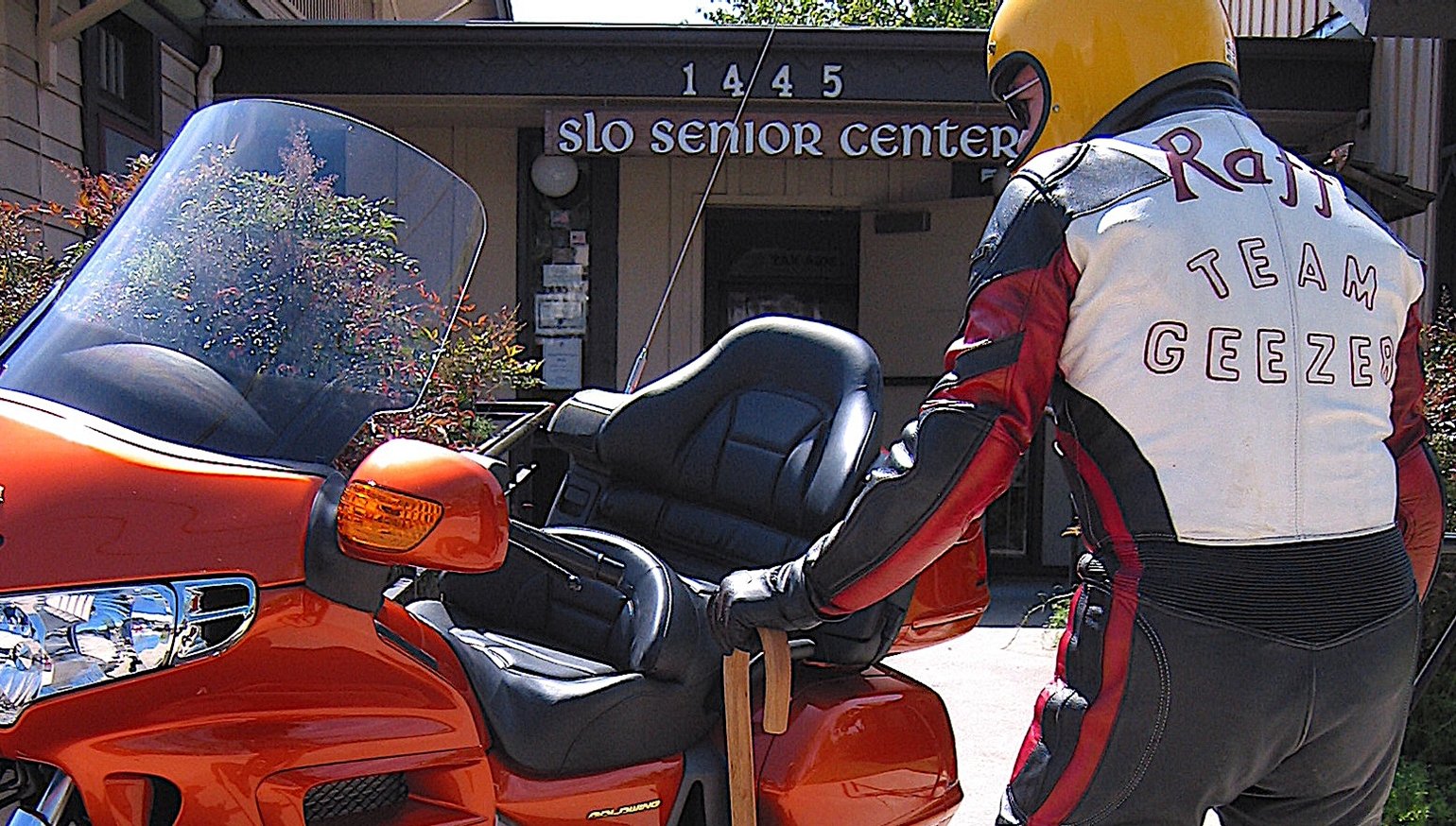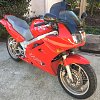"This one," I said to myself, "will probably be my last motorcycle."
The bike was a 2005 Aprilia Tuono 1000R, and that was about 15 years ago. Now, at age 84, and eight bikes later, I'm asking the same question. Will this be the last one? But now I may be on the verge of answering myself truthfully.
What's the best last chapter to a long career?
Sixty-two years. That's how long I’ve been buying, riding, racing, and having fun with motorcycles. And for more than 50 of those years, I was reviewing new models, covering races, and writing feature stories for various publications. And writing a few books on the subject. All of which is to say, I've stacked some miles on- and off-road. Choosing a bike for the final chapter is no small matter. So what are the criteria?
Age, of course, figures in the equation. In my last essay here a few years ago, I addressed the question every aging rider has to face: How do you know when you're too old to ride? While I had no definitive answer, the piece included a few tips from riders well into their senior years, and concluded with my own perspective: "What it comes down to, I think, is how we answer that one question that applies to everything in life — jobs, relationships, projects, etc. 'Is it more trouble than it's worth?' Knowing how and when to answer that question honestly is key. While the road may go on forever, we know the party eventually ends. And we also know, since the medical evidence is clear, that to enjoy it as long as possible requires a healthy diet and the regular application of physical exercise. Which are also proven to sustain brain function."
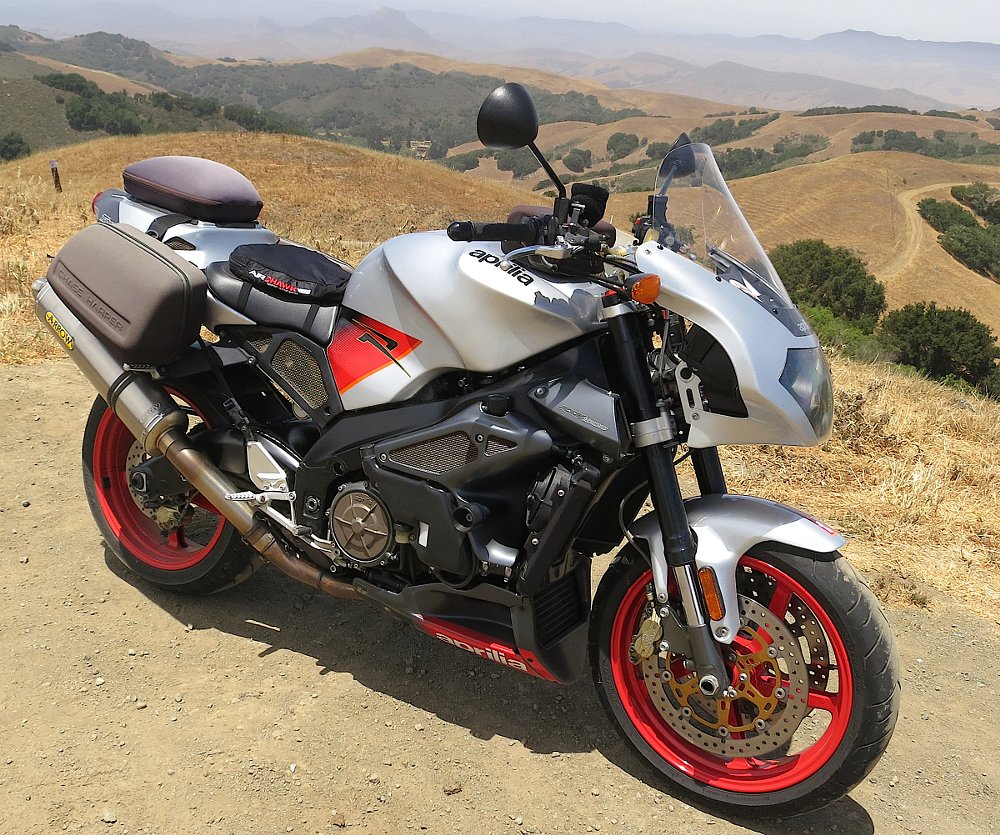
Nonetheless, we can't fail to recognize the inevitable loss of muscle mass, slower reaction times, diminishing vision, balance issues, fatigue, and so forth. So the key to staying on two wheels, and enjoying it, is to choose the motorcycle that best accommodates our limitations. In my case, although I'm in decent shape for my age, at my peak I was five feet, 10 inches tall and weighed 180 pounds, and am now five feet, seven inches and 160. No mistaking the direction of things.
I still consider myself physically capable of safely operating a motorcycle on the open road, but I want it to be fun, not work. Nor do I need to perpetuate this long rotation of bikes that are either too heavy, too tall, too fast (?), or are in any way intimidating to ride. Enough! Make up yer damn mind! Which brings us back to the criteria for selecting The Last Motorcycle.
My preference has always been the sporting ride. Not the race-replica versions, with clip-on handlebars and rearset foot controls, but the sport-touring models suitable for a long ride. Motorcycles that provide plenty of giggles in the twisties, that will also accommodate a windshield, soft saddlebags, and not leave me with a stiff neck and sore back at the end of the day. I'd rather be ready for a pint or two, some friendly conversation, and good night's sleep.
All the bikes I tried from that "last" Tuono onward met those requirements, some to a greater degree than others, but only one would be my final choice. And that decision hinged less on performance, maintenance, or reliability, than on my own capacity to deal with them proficiently in the manner they deserved. In all but one case, two factors marked their destiny — weight and seat height. I was done with tippy-toes at a stop, and grunting with the effort of moving them around in garage. The standard geezer lament.
My "last" motorcycles
The 2005 Aprilia 1000R was a terrific motorcycle; fast, marvelous mid-range urge, comfortable, handled well, etc. The feel reminded me of the Ducati Streetfighter, with most of the rough edges smoothed off. A more civilized bike overall, and to my eye quite stylish. I truly enjoyed both riding and looking at the machine, and it drew more than a few compliments from others. But I knew, in my approaching old age, that it would eventually get me in trouble. I finally had to acknowledge, in all humility, that before long the Tuono would be better than I was. Plus it was too tall. So I sold it.
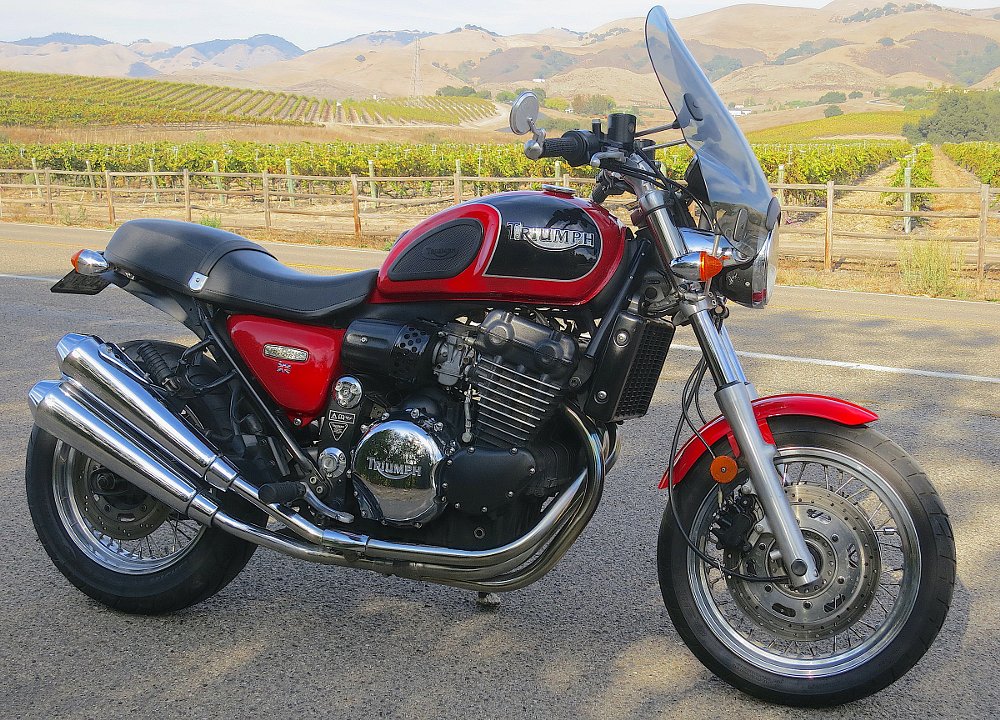
The 1998 Triumph Thunderbird Sport was a true gentleman’s express. The 885 cc triple made impressive power and delivered it without hiccups. The 62.5 inches of wheelbase, adjustable suspension, and twin front disc brakes gave the Sport the imprint of a genuine thoroughbred roadster. The spoked wheels and traditional Triumph fuel tank shape showcased its British style, and a stately stance it was. The engine howled like an angry wolf bounding across the moors. On the other hand, the long footprint and top-heaviness required some muscling in slower turns and the overall weight of 540 pounds didn’t help. Once again it was, "The problem isn't you dear, it's me." Time marches on.
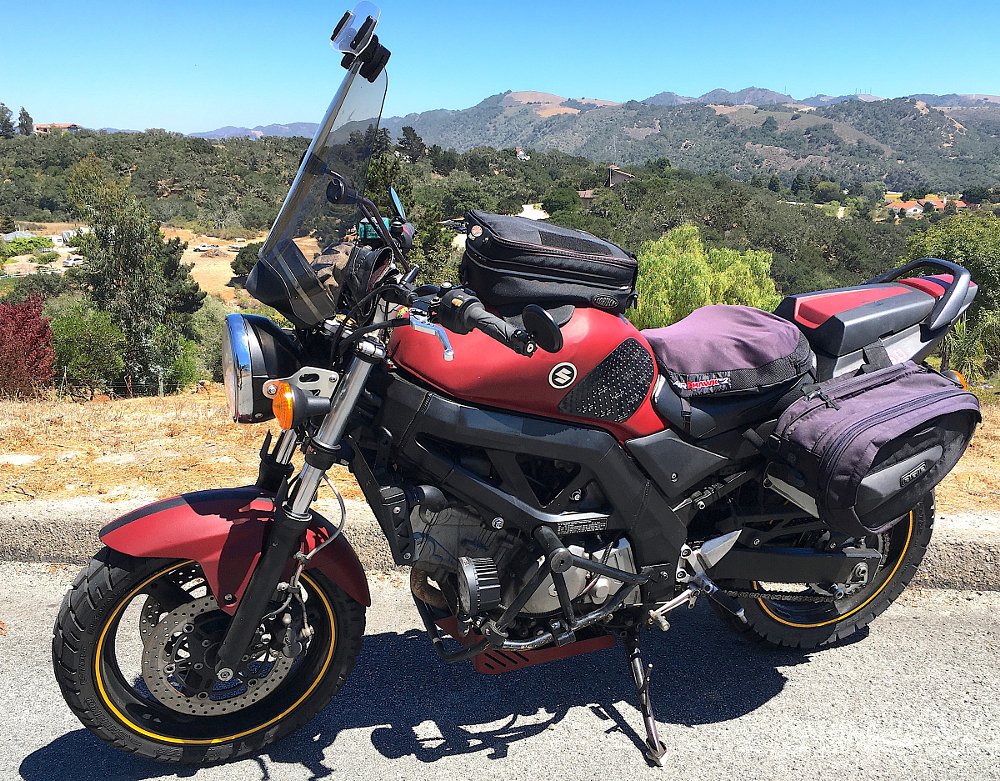
That march ended at the 2005 Suzuki SV650. At the time I thought this would be the one, the perfect candidate for the coveted TLM honors. The previous owner had set it up with case guards, skid plate, running lights, and dual-sport tires. The perimeter frame and 90-degree V-twin brought to mind the '80s Ducati Pantah/Alazzurra series, enhanced by liquid cooling and fuel injection, making 70-plus horsepower in a package weighing little more than 400 pounds. Fun to ride hard or easy, and one of the best all-round motorcycles ever. But… certainly no Cagiva Elefant on a dirt road, and a bit cramped in the seat-to-footpeg dimension. Maybe a real adventure bike…
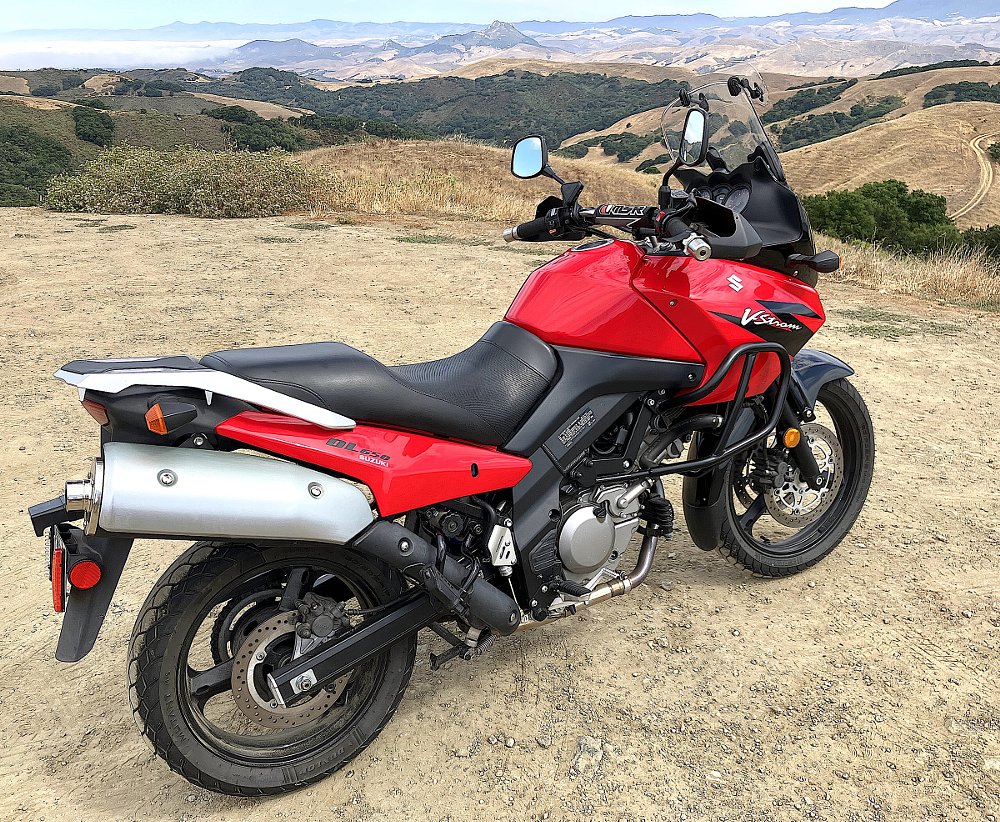
Thus the 2005 Suzuki V-Strom 650. And right back to the weight and height issues I wanted to avoid, which were rationalized by the fact that it was a killer deal. The original owner had spent considerable time and money, for 10 years, setting up the suspension, adding a full luggage kit, aftermarket exhaust, handlebar, loud horn… only to have failing eyesight prohibit riding. And despite being a decade old, the clock showed only 6,000 miles. An eminently useful machine, but again… tall, heavy. Perhaps just one more sport bike.

Fellow senior Jim Williams had a small barn crammed with mostly Hondas and Kawasakis. Getting to any one involved moving several more, which brought the 2001 Honda VFR800 up for sale. Again, low miles, great deal, and in the AWOT ("Always Wanted One of Those") category. With fond memories of the original VF750F of 1983, what could be not to like about a 110-horsepower, 800 cc version with swoopy bodywork? Not much. With the delicious urge of the 90-degree V-four, the sporty silhouette of the single-sided swingarm, comfy riding position, sticky tires… my, my. But still, close to 500 pounds is a lump. How about a sporty standard?

When, of course, another AWOT popped up. The 2007 Honda 919 was only marginally lighter than the VFR, and the inline-four engine down just a few horsepower, but the so-called "naked sport" was a whole different horse to ride. The sit-up riding position necessitated a windshield, the seat height was only 31.5 inches, and minor vibration at 70 mph was the only negative mark. But the 919 was a far more versatile bike, combining healthy mid-range urge, acute handling, excellent brakes, and long-range comfort. Yet… practical indeed, but still a piece that invited youthful hooliganism. Time for a sport-cruiser?

The 1990 VX800 could fairly be categorized as Suzuki-s take on a Harley-Davidson Sportster. With the added attractions of liquid cooling, shaft drive, and overhead cams. Although it was designed in Suzuki's U.S. studio, following extensive market research, the VX never quite caught on in the states. Maybe I was expecting more sport and less cruiser, and despite the stylish design and fairly comfortable ride, another 500-pounder. Make it the Next to Last Motorcycle.
The Kawasaki Versys and BMW F800 both seemed worth a look, but then, when talking with semi-senior friend Larry "Dogman" Kahn, who owns a Ducati Scrambler 1100 (and a '75 Norton Commando he bought new), he suggested I look at the Ducati Scrambler line of 803 cc machines. Which, I had to admit, hadn't occurred to me, even though Ducati holds a special spot in my moto-history, having owned a half-dozen or so. I thought, "Hmm…"
So, another key buy: a 2017 Scrambler Full Throttle with a little over 6,000 miles. Unabused except for a layer of grime and a chain that showed no history of cleaning. Engine sounded fine, brakes and suspension functional, lights. Mushy steering, which turned out be 14 pounds of air in the front. Felt sorry for the damn thing. The owner had started at $4,500 and was down to $4,000. "I'll give you three thousand," I said, which he considered for about two seconds, and agreed.
After 3.5 hours of mung removal, an oil change, new tires, and control adjustments, and a sprint down the back road, I was one happy fellow. Much like the Cagiva 650 Elefant, the 800 Scrambler just gives me the grins. The riding position is flat-tracker neutral, my boots go flat on the road, and there's still plenty of ground clearance. The fork is on the soft side, but well damped, and the shock is OK. That would be the first upgrade.
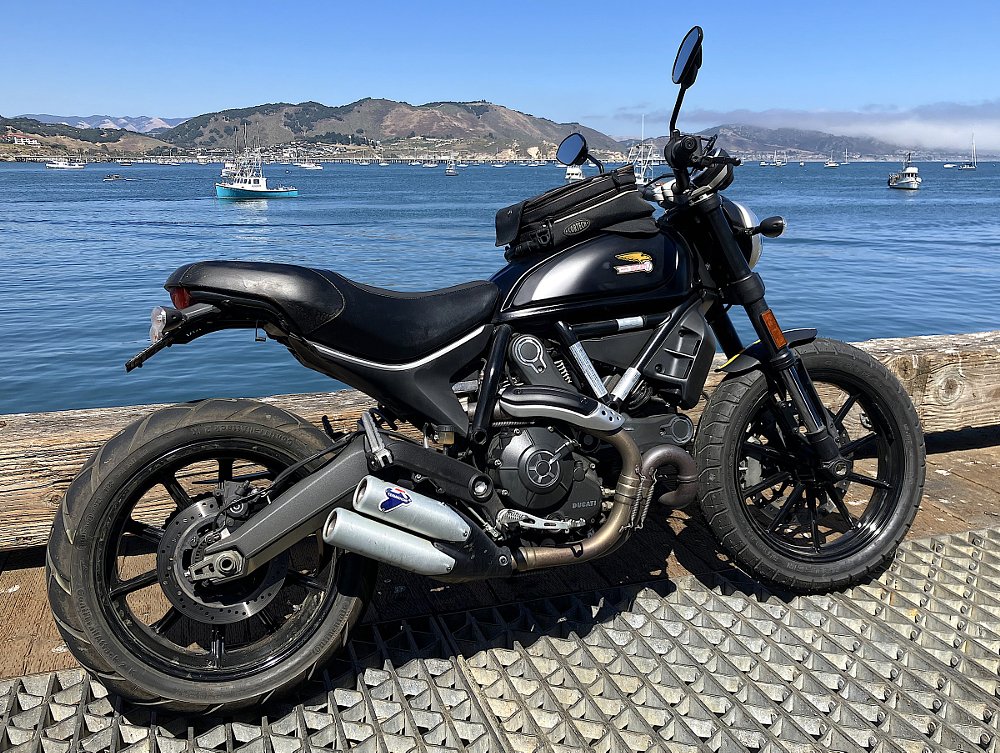
The seat wasn't the typically Italian plank, but required an Airhawk to extend the footpeg-to-seat dimension and avoid the pain of cramped hip flexor muscles. The big digital speedo numbers are nice, a gear position indicator would be useful, and the circular bar graph tachometer is useless. But, hey: 400 pounds wet, 72 horsepower, six gears, low seat… Wonderful.
The real challenge of the Scrambler for an analog senior is academic rather than operational, since it involves considerable study of the bike's panoply of electronic settings for riding modes, traction control, ABS, DQS (quickshifter), trip recorder, etc. Half the owner's manual is given to explaining the procedures. The book offers this notation for ABS under the Sport setting: "This level is designed for sport use for medium-expert riders, on the road, with good grip conditions. System permits sliding sideways."
Thus the Scrambler fulfills my hopes for many more veteran years of happy riding — having good grip and permission to slide sideways. Plus, I promised my wife that this would be my last motorcycle. Probably.




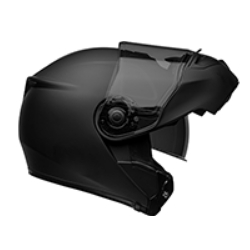

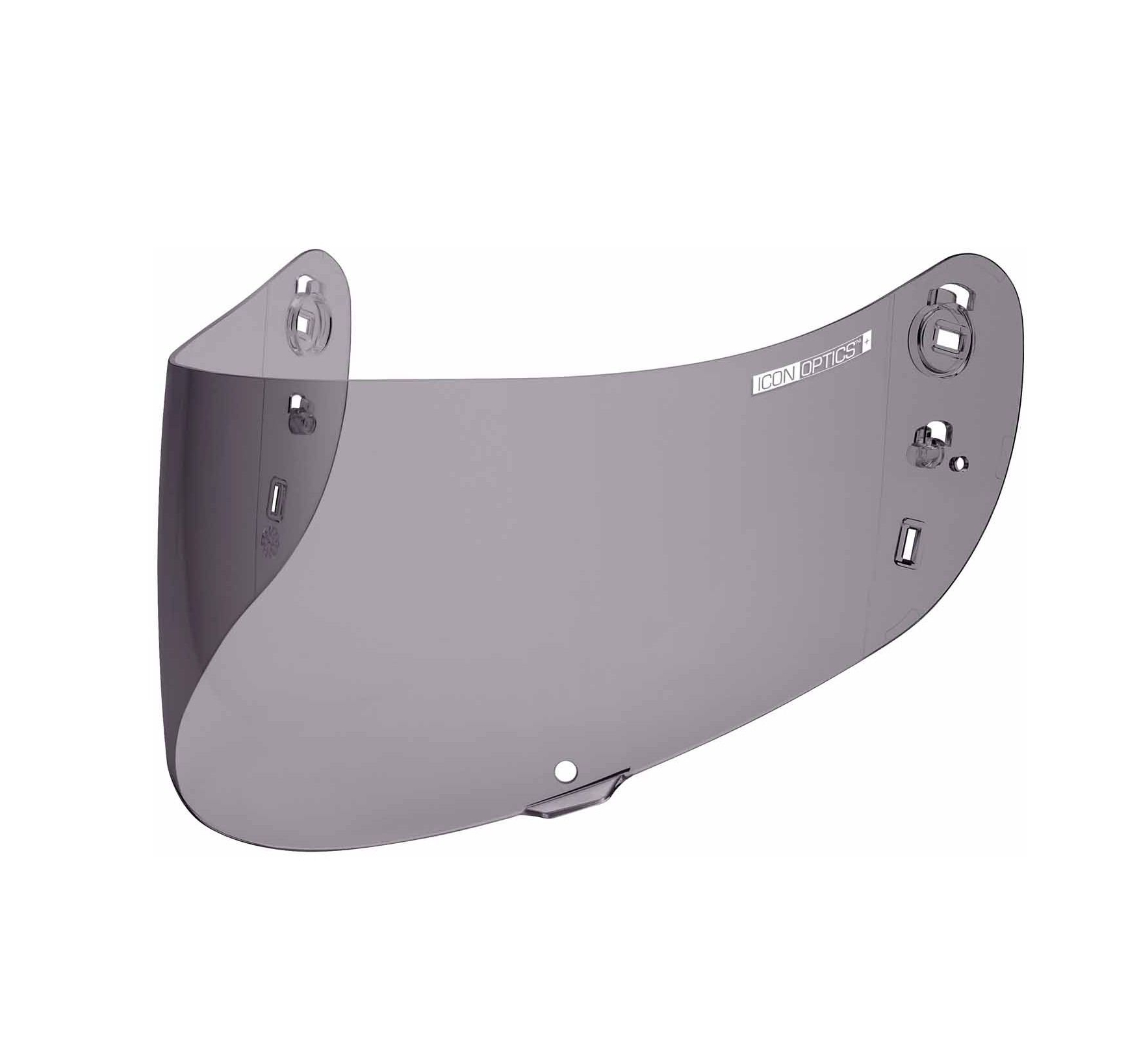
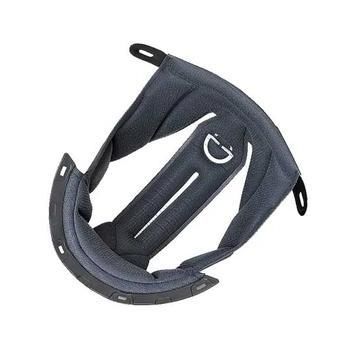
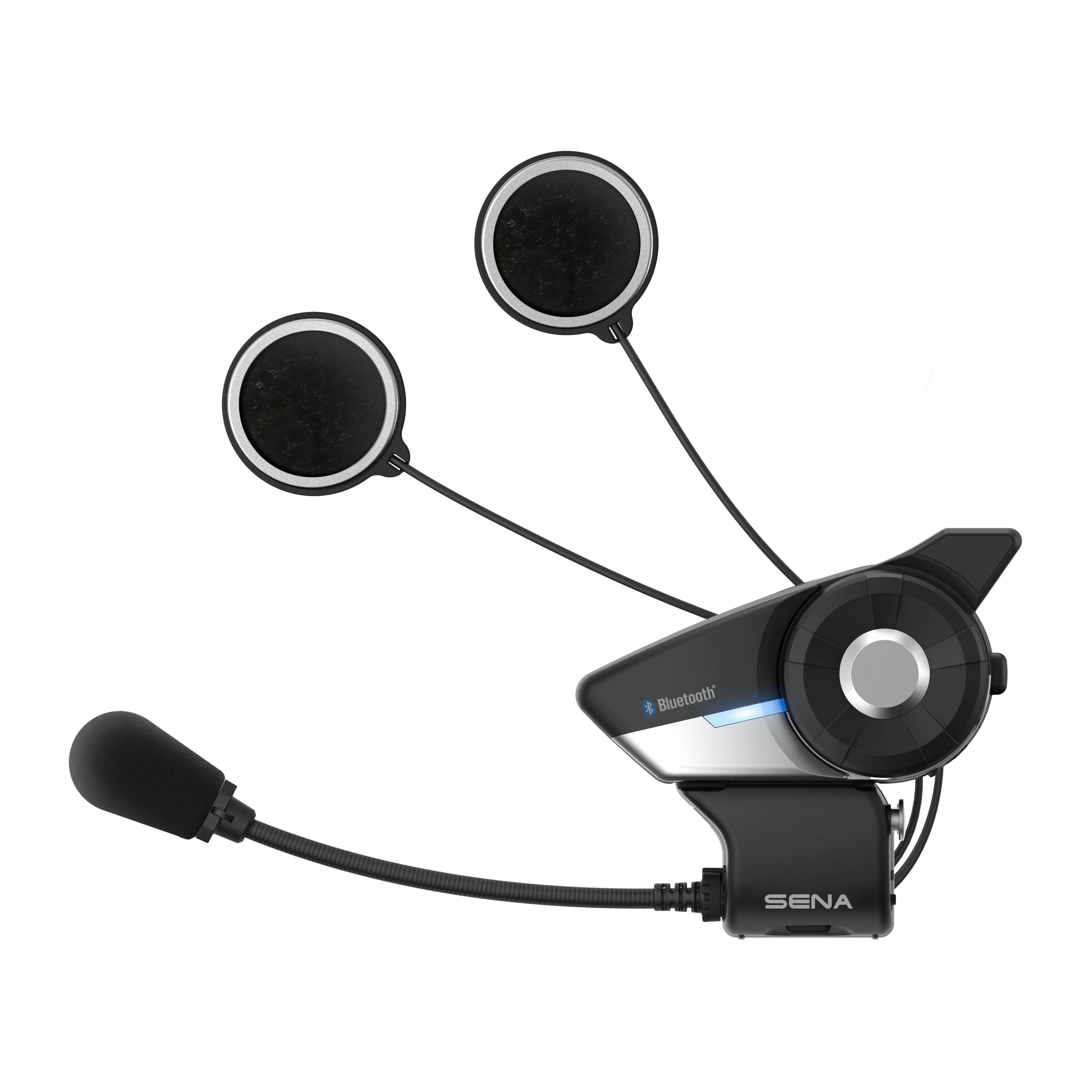


 Membership
Membership

